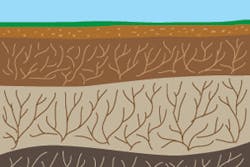The Evolution of Coastal Erosion Control Technology – Part 2
Artificial Reefs
Just as dune creation and restoration mimics a natural process, the same can be said for the creation of artificial reefs. Reefs, which have been labeled the rainforests of the sea, perform a particularly important coastal erosion control function, acting as natural breakwaters. Protecting shorelines from wave action, and in particular from surges caused by severe storm events, these natural erosion control devices provide an important first line of defense.
Wave attenuation devices are manufactured products designed to create artificial reefs. Cast from high-strength concrete, the devices are deployed underwater and have proven extremely effective in accreting sand and in restoring or expanding beaches. Success stories are plentiful. Quite simply, as artificial reefs, the wave attenuation devices collide with tidal surges and slow them down, with waterborne sand being deposited behind the structures. In a 2009 application in Negril, Jamaica, a wave attenuation device array resulted in a 60-foot gain in beach depth just 39 days after installation.
During World War II, in preparation for the Allied invasion at Normandy, Winston Churchill became fascinated with the idea of creating an artificial harbor on the French coast. In his sweeping 12-volume history of World War II, Churchill spends considerable time discussing this idea. Knowing that all the established French ports would be heavily defended by the Germans, the British Prime Minister resolved to build such a harbor in Arromanches, France, just east of the Allied landing sites at Utah and Omaha beaches. All the components for these structures were manufactured in England and towed across the English Channel.
More than a dozen ships were sunk to provide a first line of defense. A second breakwater was created by sinking reinforced concrete shells. Floating piers and steel causeways were also added. The remains of these innovative structures, which provided the safe harbor the Allies sought, are still visible to this day.
Beyond wave mitigation, reefs provide shelter and refuge for wildlife, along with spawning and feeding areas. Although reefs cover less than 1% of the ocean floor, they support an estimated 25% of all marine life, an incredible statistic. Wave attenuation devices take on these same characteristics, quickly being colonized by a very diverse group of organisms, including crustaceans, mollusks, and sponges.
Marine Mattresses
Marine mattresses offer yet another new technology option. Constructed with high-strength geogrids and geotextiles, the mattresses are then filled with stone. Functionally, marine mattresses resemble gabions, which are three-dimensional wire structures filled with stone. The flexible geosynthetic component of marine mattresses allows for easier conformity to land contours and irregular subgrade conditions, especially when compared with wire products, which are at once more rigid and can corrode. The high-strength cells of the mattresses can be overtopped with beach sand and planted with native vegetation. In other applications, above the high-water mark, mattresses have been filled with a combination of stone and topsoil, seeded, and then protected by a high-strength turf reinforcement mat. In such systems the vegetation itself is anchored within the mattress, while its root-and-stem structure is protected by the three-dimensional turf reinforcement matting.
Above and below: Wave attenuation devices
Gabions
Gabions, as described above, have been utilized for coastal stabilization. After the three-dimensional baskets are fabricated, they are filled with stone. As is the case of marine mattresses, gabions are flexible and flowable, two desirable characteristics. Their wire construction is a legitimate concern, and in any marine application PVC-coated wire should be used.
Coastal Bluff Restoration
Much of the world’s coastline is defined by rock bluffs and cliffs, and it is easy to assume that such coastlines are indestructible. While not as vulnerable as sandy beaches, rocky bluffs do in fact erode. In response, rock restoration technology has been developed. At Pebble Beach Golf Course in California, such techniques have been used to restore fragile rocky outcroppings. With concrete and steel at the core, these structures are shaped, sculpted, textured, and colored to blend with existing rock.
Coastal rock restoration is further complicated by the importance of working around the tides, understanding local geology and wave patterns, and working closely with the appropriate regulatory agencies. These factors, and others, make coastal erosion control planning and engineering extremely complex, regardless of the technology or practices being employed. Virtually everyone involved with coastal erosion control planning admits to mistakes and lessons learned. In one case, during a rock restoration effort along a beach, the designing engineer chose to specify a stair-step design. This design actually accelerated wave splash and made the problem much worse.


